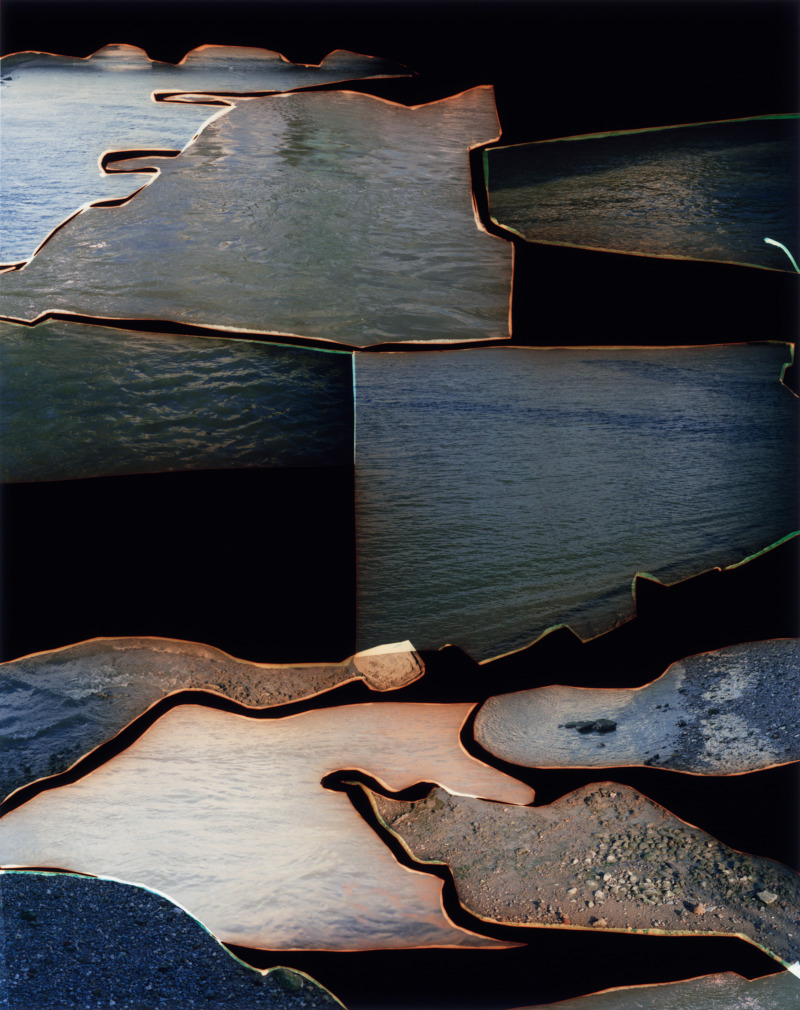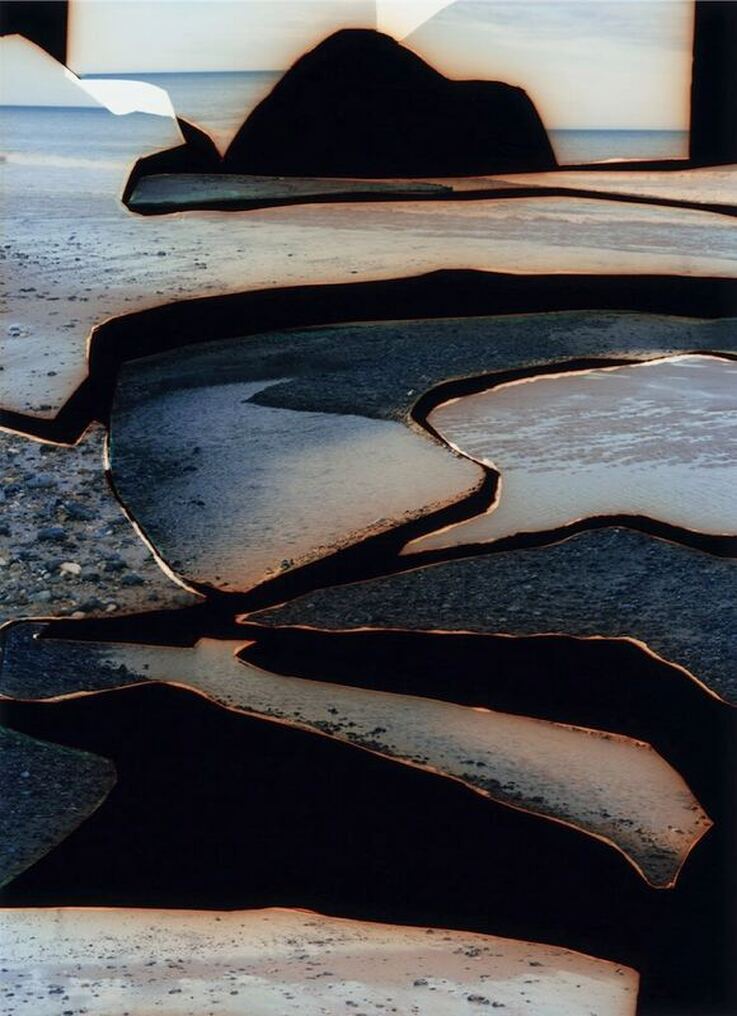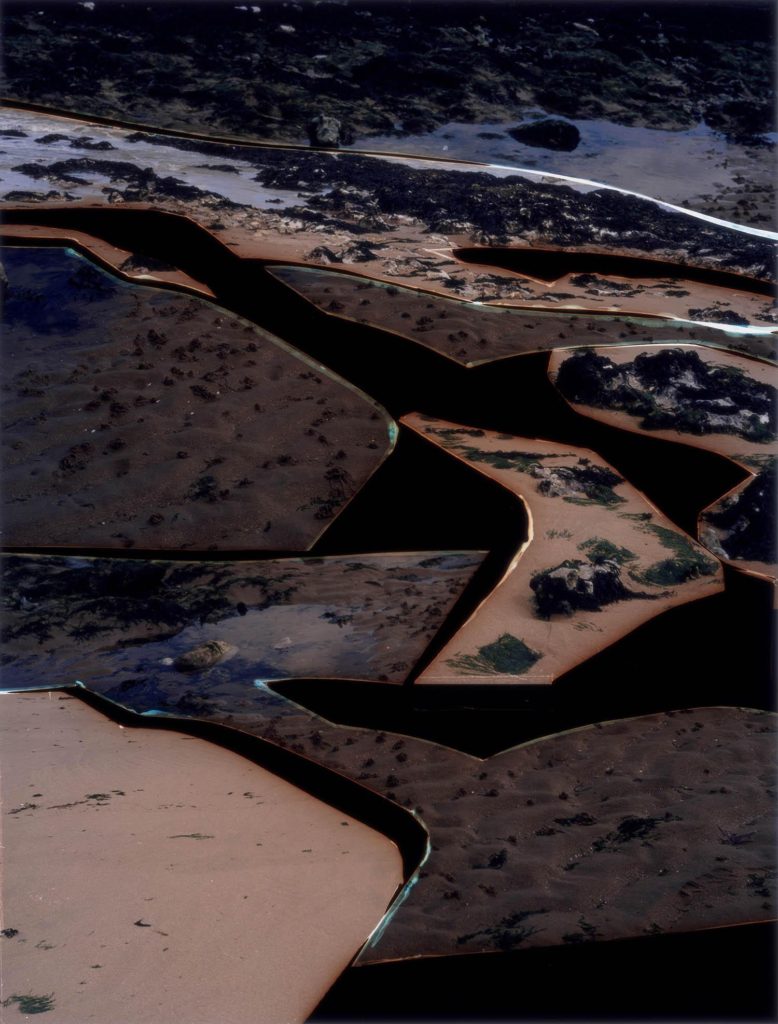Dafna Talmor is a London based artist who tends to focus on photography and spatial interventions. She ‘s well known for her constructed landscapes which she creates by experimenting with her photographs in the darkroom after taking analogue photos and splicing them together to create new landscapes. Her process often involves removing man-made “interruptions” so she can use the leftover negatives to create her own, using much thought and care so her work isn’t “arbitrary”
“The thing that tends to be cut out initially is anything that is very obviously man-made, things like roads, structures, bridges; anything that is somehow interrupting the so-called ‘purity’ of the landscape…I realised I was creating my own man-made interruptions through the negative space that was left behind…I wanted a specific reason behind my cutting these negatives” – Dafna Talmor



Image Analysis:

In this image, Talmor has carefully spliced together different parts of landscapes. She’s made sure to line up the different textures and tones in the image in a way so it’s not obvious what each section was pre-splicing yet has also managed to combine the different textures, creating a fluid pathway between each section of the image, managing to make an abstract yet naturalistic image simply from her deliberate and attentive arrangement of each section.
The contrast between the darker areas of the image and the pale orange tones adds to the abstractedness of the image as it embraces how the landscape we’ve been presented with isn’t a real place rather than trying to perfectly line up every jagged edge to create a ‘perfect’ end product. The negative spaces also add depth to the landscape, stopping the image from looking flat and builds the illusion that there are hills in the image, making the piece as a whole more visually interesting to look at.

wooo go bestie